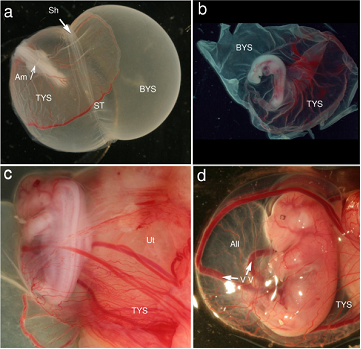Accompanying the publication of the tammar wallaby genome sequence in Genome Biology, BioMed Central also has a pouchful of companion articles in a cross-journal article series.
The focus of several of these studies is on the insights that the genome sequence offers into marsupial immune systems. Emily Wong and colleagues present a database of immune genes identified from several marsupial and monotreme species. This gives researchers a new tool for exploring immune function in these groups and more broadly in understanding the evolution of the mammalian immune system. In another study, Wong et al. also compare the genes expressed in the twin thymus glands of wallabies to understand the immune function of each organ, finding that both are functionally equivalent.
A third study, by Hannah Siddle and colleagues looks in detail at the immune genes of the wallaby major histocompatability complex (MHC). They find that there have been extensive changes in the organization of these genes since the split of the Australasian and American marsupials, with the wallaby Class I MHC genes having been scattered across a number of genomic locations and the Class II split into two separate clusters.
In a publication in EvoDevo Brandon Menzies and colleagues demonstrate that the wallaby placenta secretes hormones structurally and functionally similar to the pituitary hormones prolactin, luteinizing hormone and growth hormone. This suggests that these pituitary hormones may be an ancestral feature of the reproduction of all mammals.
Hop over to the series homepage to read more, and the rest of the articles.

The Tammar Wallaby embryo and fetus at day 18 (a,b), 23(c) and
25(d) of gestation. The joey is born on day 26. Taken from Menzies et al. EvoDevo
Comments